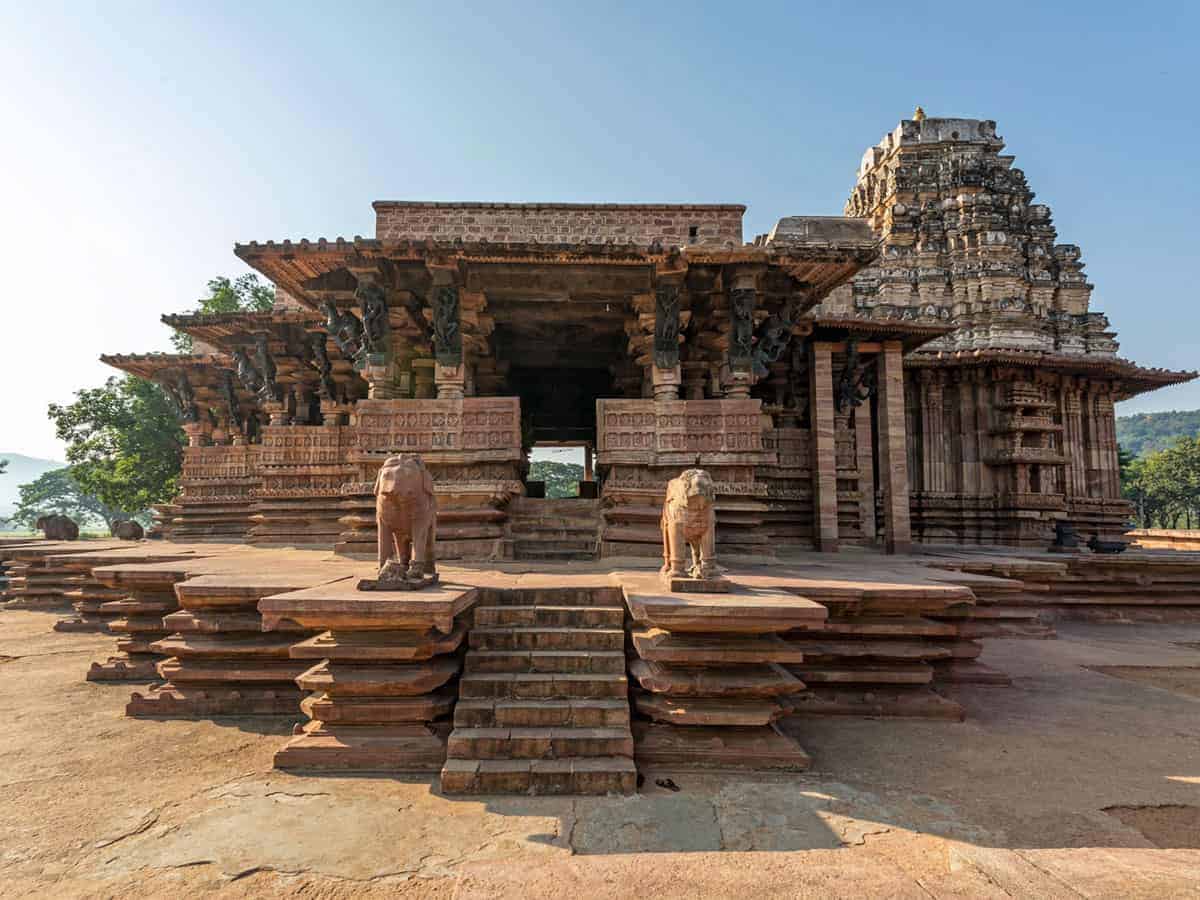Hyderabad: UNESCO has declared Ramappa Temple as a world heritage site. The International Council on Monuments and Sites (ICOMOS) made a special reference in its report to the 44th session of the World Heritage Committee of the UNESCO which is underway in Fuzhou, China stating that the temple now is in a satisfactory condition mainly due to the extensive restoration and preservation efforts of the Nizam Government to bring it to its present condition. In this regard, the report said, “The main temple of the complex, the Rudreshwara (Ramappa) Temple, is considered to be in a satisfactory state of conservation and has been frequently conserved and maintained since 1914 by the Hyderabad Archaeology Department of Nizam with the guidance of the Kakatiya Heritage Trust. Prior to these conservation initiatives the temple was overgrown with vegetation and damaged by growing roots, which were removed.
The temple survived a major earthquake during the 17th Century. It was in a dilapidated, ruined and forsaken condition prior to the restoration and preservation efforts since 1914 by the Nizam government of the Hyderabad State.
In 1931, Dr. Ghulam Yazdani, the world famous Indian Archeologist and Conservationist who established Hyderabad Archaeology Department under the Nizam Government, had traced the decorations and ornaments of the temple which were missing and restored them in its original positions.
The contemporary state of conservation is a product of continuous conservation activities since the early 20th century, during which all elements of the temple complex, apart from the Kameshwara Temple, have been conserved to different degrees.” The ICOMOS report said.
Immediately after the UNESCO’s announcement, Prime Minister Narendra Modi tweeted: “Congratulations to everyone, especially the people of Telangana. The iconic Ramappa Temple showcases the outstanding craftsmanship of the great Kakatiya dynasty. I would urge you all to visit the majestic Temple complex and get a first hand experience of its grandness.”
Speaking on the historic occasion, M.A. Qaiyum, Retired Dy. Director, Archaeology and Museums Department, Government of A.P shed light on the efforts made by the Archaeologist and Conservationist of Hyderabad Archeology Department, Dr. Ghulam Yazdani in restoring Ramappa (Rudreshwara) Temple to its present condition.
“There was no road to the temple site in 1914. Dr. Yazdani had to travel on horseback and elephants to visit the temple site for his initial research and study. A railway line was laid upto Qazipeth during 1920-25. It was on his suggestion, the Late Nawab Mir Usman Ali Khan, the 7th Nizam, ordered a bus service upto the temple site,” Qaiyum said during his “Historic Background” lecture series.
About the condition of the Ramappa temple in 1914, Qaiyyum says that 12 Chajjas of the temple were precarious and were about to fall at the time of the restoration work. “Dr. Yazdani brought in stone pillars to support the chajjas. He did it with such a finesse and craftsmanship that the pillars blended well with the structure,” Qaiyum said.
Qaiyum states that had it not been for the timely repair by Dr. Yazdani, the condition of the temple would have deteriorated beyond restoration. The foliage clearing was done with extreme care by Dr. Yazdani’s restoration team. The roots of the shrubs went deep inside the temple’s walls which had to be cleared painstakingly.
About the temple’s architecture Qaiyum describes, “The Temple is constructed on a six feet high stone platform with a star shape design. It has entrance from three sides. It is built of sandstone with decorated beams and pillars of carved granite. A stone canopy is standing on four pillars in the middle of the temple on a three feet raised platform. The inside brackets of the temple carry 12 figurines of dancing girls. The intricate carvings and craftsmanship has been done in typically Kakatiyan style which has the Challokian influence in its interior artwork. The structure gives a glimpse of the technical know how and materials of its time. The lower part of the temple comprises red sandstone and its foundation is built with basalt pillars. There is a small sanctum made of porous bricks inside for Pooja. The bricks are said to be floatable in water.
“There is an inscription in the temple which mentions 1213 as the year the temple was built by Kakatiya General Racherla Rudra Reddy, during the rule of Ganapati Deva, the Kakatiyan ruler.”
Speaking about the fascination of Dr. Yazdani about the Kakatiyan arts and architecture, Qaiyum says: “Dr. Yazdani brought a stone canopy with four pillars of Kakatiyan era he found during the Archeological excavations in Warrangal and placed it in Hyderabad Museum’s public garden.”
“The Nizam record books have entries of details pertaining to the temple’s restoration and conservation works like how much budget was allocated and how much money was spent, schedule of work and the details of those who were employed for the project,” Qaiyum said.
Dr. Yazdani also undertook restoration and conservation of Warangal Fort and the famous 1000 pillar temple of the Kakatiyan era and constructed gardens near them and landscaped their surrounding areas.
“The UNESCO’s declaration of Ramappa Temple as a World Heritage Site is a great moment of pride for not only the people of Telangana but for the whole country. It is a clear recognition of the late Nizam’s love for his people and respect for their culture and his generous spending in preserving their historic monuments. It is also the recognition of the late Dr. Yazdani’s contribution in the restoration and conservation of this unique temple,” Qaiyum said.


